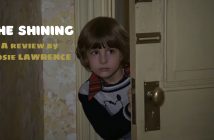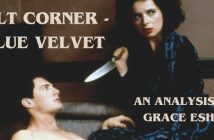Nosferatu: A Symphony of Horrors, is the unauthorized film adaptation of Bram Stoker’s gothic classic, Dracula. This autumn, Euureka! Entertainment is re-releasing the horror classic in select cinemas, from the 25th October as part of their ‘Masters of Cinema’ series. This new iteration of the German director F.W. Marnau’s critically acclaimed work of silent cinema has been restored for theatrical and home video release to coincide with Halloween and the British Film Institute’s “GOTHIC: The Dark Heart of Film” season. It will be available on Blu-Ray, Blu-Ray Steelbook, and DVD, as well as in select cinemas.
Originally released in 1922, Nosferatu: A Symphony of Horrors is a silent cinema horror and an exemplar case of German expressionism through film. Since it’s original release Nosferatu has received critical praise for its success. The renowned American film critic, Jonathan Rosenbaum, hails Nosfeartu as, “The first and greatest of all vampire films,” whilst the acclaimed German-French critic Lotte Eisner celebrated F.W.Murnau as, “The greatest film director the Germans have ever known.” In 2010 Empire magazine, Nosferatu was ranked #21 in its poll to find the 100 greatest films in world cinema.
Evidently, Nosferatu, has earned the popularity and acclaim to warrant restoration and re-release. Craig Keller, the producer of The Masters of Cinema Series explains that, “This new restoration of Nosferatu has been meticulously prepared and looks truly outstanding. It will allow a new generation to experience afresh one of the greatest of all cinematographic horrors.” So, will Nosferatu stand the test of time and deliver the same thrills chills and horror to modern audiences that it did back in 1922?
Nosferatu is the story of Hutter, who is sent by his employer, Knock, to secure a deal with the mysterious Count Orlock to purchase a property in his fictional hometown of Wisborg. The brave Hutter disregards the ghost stories of fearful locals who advise him to stay clear of Orlock’s land. As he enters Count Orlock’s castle, Hutter begins to experience bizarre dreams, and learns more and more foreboding truths about his mysterious host.
Nosferatu, is certainly a fascinating film, and captures the themes that are quintessentially Gothic: perfectly. From the very opening the viewer is enthralled by the ominous and suspenseful overture. The original soundtrack was composed by Hans Erdmann, however much of it has been lost and therefore reconstructed for this release; to great success. In addition to it’s excellent score, Nosferatu is incredibly atmospheric due to its brilliant cinematography. The viewer is guided to desolate wilderness, a haunting castle, derelict residences and cells, as well as sublime mountains and powerful river sequences, all in the gothic tradition. Though a black and white film, tinting and toning has also been used to cast colour upon the frame, and add further depth and mood to various scenes, from cold blues to foreboding reds.
Max Shreck’s make up and costume are superb. They make his Count Orlock a villain that is still original, visually striking and frightening today. The effects used to make Orlock disappear into thin air are convincing and well used. Orlock however is merely a presence, a haunting visual, very little acting is done on Shreck’s part besides standing around ominously, and creeping about. Knock, however, who is enslaved by Orlock and driven mad, is genuinely scary, and actor Alexander Granach successfully imbues his character with a frightening lunacy as he rants and raves in his jail cell, and later torments the townspeople.
As Count Orlock sets off on a voyage to Wisborg, subsequently bringing with him many supernatural and disastrous happenings, a greater threat is made clear to the viewer as this vampire descends upon humanity. Hutter is left to race home fearing for the safety of his wife as the town of Wisborg is beset by a plague rats. The race between Hutter and Orlock to return to Wisborg suffers as the viewer loses track of where the two characters are within relation to one another, creating confusion in what could have been a very tense scene. Overall, however, the narrative is successfully conveyed in a manner by Marnau that is full of suspense and scares.
The chief problem faced by Nosferatu is unfortunately unavoidable. Due to its very nature, as a silent film, the viewing experience is a little unfamiliar to cinema goers that have not seen one before, and unlike most modern films, it requires far more engagement and attention to appreciate. As such, the viewer must have a certain level of enthusiasm and desire to experience Nosferatu, as an example of cinematic history, otherwise the film’s narrative will be lost on the uninterested, becoming tedious and confusing. Nosferatu suffers the curse that it will largely be judged by modern audiences on its form as opposed to its content, however for those willing to engage with the film, Nosferatu can be a very rewarding experience.
4/5 Stars
Nosferatu, directed by F.W. Murnau, is re-released in the UK by Eureka! Entertainment, at select cinemas, on the 25th October.


